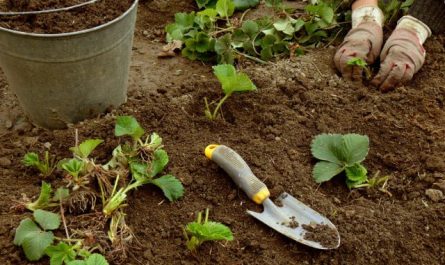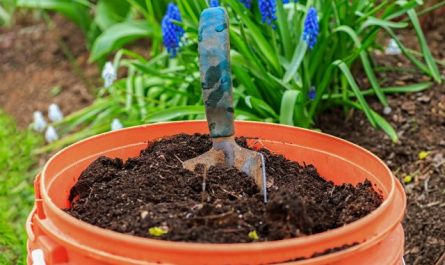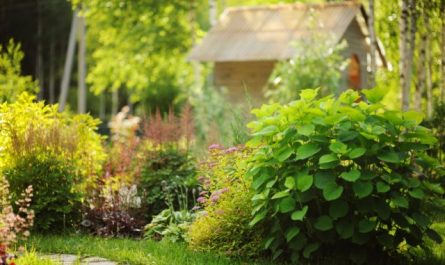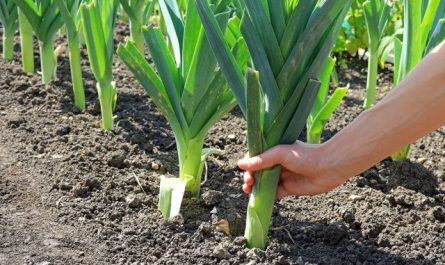Potatoes are one of the main vegetables that are easy to grow, nutritious and have the added benefit of being stored for a long time. Unfortunately, the traditional method of growing potatoes requires quite a lot of space, which can be a problem for some gardeners. In this case, homemade potato towers are the perfect solution. Want to learn more about them?

What is a potato tower?
A potato tower is a simple structure that is easy to build and is ideal for gardeners with a small plot or those who simply want to make the most of their existing space. Typically between 0,6 and 1,2 feet tall, these simple structures are made from metal fencing cylinders lined with straw and then filled with soil.
Building a potato tower is not difficult, and almost anyone can do it. First, you need to study the instructions for creating a potato tower. Then buy seed potatoes (choose a variety that suits your region). Mid-season and late varieties work best in potato towers.
Expect about 10 potatoes to grow per planting space in the tower. This should give you an idea of how many potato towers you should build based on your family’s needs. If you find your potato towers to be less decorative, you can separate them from the main part of the garden with a bamboo screen, which is easy to find at a garden store, or decorate the tower itself with it. You can also plant flowers or other low-growing companion plants (like herbs) on top of the potato tower.
How to build a potato tower?
To build a potato tower you will need:
- Wire fencing or wire mesh (about 1,4 meters long and about 1 meter high)
- Three reinforcement bars 1,2 meters long
- One perforated PVC pipe with cap (1 meter high and 10 centimeters in diameter)
- Ties-clamps
- Two bales of straw (not hay!)
- One large bag of aged compost or chicken manure fertilizer
- Pliers
- Sledgehammer
Once you have everything you need on hand, you can begin making your potato tower.
Step 1. Twist the mesh and secure it with ties to form a cylinder with a diameter of approximately 45 cm (or larger).

Step 2Place the cylinder in a pre-selected location and secure it by running reinforcement rods through the metal fence. Hammer the reinforcement rods about 15 centimeters into the ground to securely anchor the potato tower.
Step 3Place the PVC pipe in the center of the tower.
Now we begin filling the tower.
Step 4Line the bottom of the tower with a ring of straw along the walls to a height of 15–20 centimeters.



Step 5. Fill the straw ring with a layer of garden soil mixed with aged compost or chicken manure fertilizer. Some people do without any soil and plant using only straw. Another option is to make a ring of leaves or newspapers. Also, instead of straw, use a dense non-woven material fixed to a mesh. The main goal in this case is to create a layer so that the soil does not spill out of the mesh cells. Now everything is ready for planting potatoes.
Step 6. Cut the seed potatoes into pieces, each with 2-3 eyes (whole tubers can also be used). Plant the potatoes along the edges of the tower at a distance of 10-15 centimeters from each other, so that the sprouted eyes are directed towards the wire fence.
Step 7. Create another straw ring as in step 4 and fill it with soil and fertilizer. Plant another batch of seed potatoes and repeat the entire process – layering potatoes, straw and soil until you reach a height of 10 centimeters from the top of the tower.
Step 8. PVC pipe, do not fill it. Leave it sticking out at the top, but cover it with straw. The pipe in this case performs a very important function. Potatoes love water, and through the pipe you will be able to irrigate them evenly. Fill the pipe with water to create a kind of reservoir that will slowly release water into the substrate. Close the pipe with a lid to protect it from mosquito larvae and blockages.
Harvesting potatoes grown in a tower
Once the potato tops begin to dry out and die, you can begin harvesting. Take a large tarp or other sturdy material and place it on the ground next to the tower. Tip the tower onto the tarp and carefully lift out the soil and potatoes.
Usually, digging up potatoes planted in a traditional way is perceived as a duty, because it is hard and monotonous work. But this is not true at all with a potato tower. Picking out potato tubers grown in a tower really looks like fun for children, the elderly and adults.
This can be a favorite late summer activity for little ones. Since the soil becomes loose when you pour the soil out of the tower, you can literally comb the soil with your hands, making it easier to extract the potatoes. Also, the tubers will not be damaged by the shovel, as with traditional digging.
Using used soil for next year’s potato tower is not a good idea. It may contain insects or diseases, so you have a few options:
- Solarize the soil to kill insects and diseases.
- Use the soil in your garden’s crop rotation, such as spreading it over a bed where you plan to grow legumes next year.
- Add a mixture of soil and straw to the compost.

Who is not suitable for the method of growing potatoes in towers?
If you live in a hot, dry climate or windy region, the tower method may not be suitable for you.
Scientists have discovered that in tropical climates, when soil temperatures consistently rise above 25°C, potato plants signal their roots to stop producing tubers.
Instead, plants may activate other reproductive strategies, such as producing more fertile flowers and setting multiple green fruits on the main stem.
Too much root heat is one reason why potatoes grown in above-ground containers may not survive in hot summer climates. Potatoes can withstand high air temperatures, but when the roots get too hot, the productivity of the plants drops off dramatically.
The second problem with growing potatoes in towers, pots or bags is the dwarfing effect caused by the small volume of the containers. The plants sense that they are growing too close together, causing them to produce many small tubers rather than a few large ones.
Growing potatoes in a location where the towers will receive shade during the afternoon can help prevent their root systems from overheating in hot regions.




















